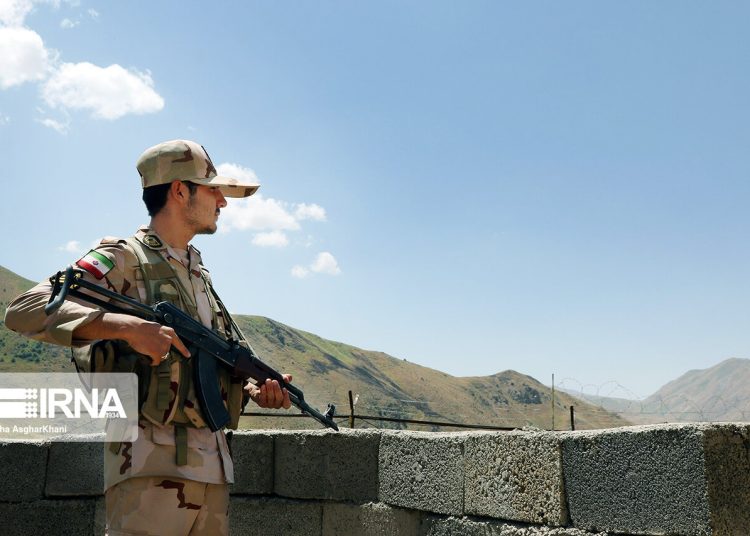While Iran exhibits hydro-political dependence on Afghanistan, Afghanistan reciprocally exhibits geopolitical dependence on Iran.
By Abas Aslani
The dispute over rights to the Hirmand River has long been a contentious hydropolitical issue between Iran and Afghanistan, projected to significantly shape the future of Tehran-Kabul relations in light of recent tensions and environmental developments. Tehran steadfastly demands the enforcement of the 1973 water-sharing treaty, while the Taliban contends the Hirmand’s water supply is inadequate. Contrarily, Iran recently presented satellite images depicting considerable water reserves in Kajaki and Kamal Khan dams. Consequently, Iran’s foreign minister issued an uncommon statement asserting that the nation does not recognize the ruling regime in Kabul. The exchange of fire in border area that transpired on May 27 took place amid escalating pressures over the water dispute.
After the United States ceded power to the Taliban, Tehran cautiously approached the situation, aiming for cooperation with the group. Iran endeavored to convince the Taliban to establish an inclusive government that embraces all political and ethnic factions, ensuring equal rights for both men and women. In the wake of rising tensions, international observers question the trajectory of Iran-Taliban relations.
Historically, foreign powers, particularly the United Kingdom, have intervened in Hirmand water rights disputes, compelling Iran to forfeit certain rights each time. Consequently, Iranian officials stress their resolve to employ every available means to secure rightful access to Hirmand water.
Hirmand’s Role in Iran-Afghanistan Hydro-political Conflict
The question of Hirmand River ownership has consistently constituted a critical political, social, environmental, and economic issue between Iran and Afghanistan since Afghanistan detached from Iran under the Treaty of Paris in 1857 and the Goldsmith Arbitration in 1872. The then rulers of Afghanistan appropriated the authority to determine the Hirmand River’s fate. The river, originating from the northwestern mountains of Kabul, ultimately reaches Hamoun Lake after a thousand-kilometer journey through Afghanistan.
During the 19th century, Britain mediated disputes between Iran and Afghanistan concerning Hirmand water rights; however, each instance resulted in the forfeiture of a portion of Iran’s rights to Afghanistan. The situation prompted some Iranians, as former British diplomat Jack Straw noted in his book, to attribute the problem to “an English job.”
It was not until the 1920s, when tensions over the Hirmand water permeated Iran-Afghanistan relations, that the two countries initiated direct negotiations regarding Hirmand River water-sharing. By 1936, a provisional agreement was signed between Iran and Afghanistan allocating equal shares of Kamal Khan Dam water to both parties. However, this agreement failed to completely dissolve water-related tensions between Tehran and Kabul.
In 1945, Afghanistan commenced construction on a dam and diversion channels along the Hirmand River. The United States, Britain, and Soviet engaged in provocative maneuvers within Iran’s water dispute. Despite a multitude of negotiations between Iranian and Afghan heads of government and American mediation efforts at some points, discord persisted until a 1973 agreement was clinched in Kabul by the leaders of both nations. Comprising a preamble, twelve articles, and two annexes, the treaty—although ratified by both countries—has been regarded with circumspection by Afghanistan given its turbulent history.
The Harirud River (also known as the Hari River) water rights dispute constitutes yet another deadlock between Iran and Afghanistan. As Afghanistan’s second most vital river after the Hirmand, the Harirud flows from northwest Afghanistan towards Turkmenistan and Iran. In 1921, a treaty between Iran and Russia initially delineated water rights pertaining to the Harirud. During Ashraf Ghani’s presidency and in 2014, Afghanistan resolved to construct the Salma Dam on the Harirud with Indian financial and technical backing, notwithstanding Iran’s opposition. Inaugurated in 2015, the dam reduced water flow to the Friendship Dam—a joint Iran-Turkmenistan project—by 73%, thereby further casting a pall over Iran-Afghanistan relations then and in the wake of the Taliban’s resurgence in power.
Political Hostage-taking
Convergence and divergence factors within the Iran-Afghanistan relationship impede the establishment of stable, amicable ties between the two nations. The rights dispute remains one of the most salient sources of contention between Iran and Afghanistan. Throughout history, Afghan governments have leveraged the Hirmand issue against Iran. Presently, Afghanistan’s political instability and the international illegitimacy of the Taliban engender fresh incentive for Kabul to exploit the Hirmand situation in relation to Iran, with external influences possibly contributing to this dynamic.
With new paradigms emerging for Afghanistan’s future under Taliban governance and Kabul experiencing isolation in tackling intricate domestic and foreign matters, the Taliban seeks assurances and political concessions from Iran vis-à-vis its unilateral policies. Threat and insecurity have historically constituted integral components of the Taliban’s strategic approach.
Prospects of Tehran-Kabul Relations
The prospect for Tehran-Kabul relations is multifaceted. Eastern Iran’s water security is intrinsically connected to Afghanistan’s Hirmand policy; conversely, Afghanistan’s landlocked status and reliance on Iran—including the presence of several million Afghan migrants in the country, the necessity for transit access, and the commercial significance of Chabahar port—render Afghanistan geopolitically subordinate and geographically dependent on Iran. This matter will assume increasing prominence in forthcoming interactions between the Taliban and Iran.
For example, subsequent to the recent skirmishes, Ayoub Kurd, the Director General of Transportation for Iran’s Sistan and Baluchestan province, declared that “owing to the latest conflicts at the Iran-Afghanistan frontier, all economic exchanges via the Malik border with Afghanistan have been halted until further notice.” One might posit that this tactical move by Iran could potentially signify Tehran’s strategic deployment of its formidable economic prowess as a means of exerting pressure upon the Taliban, thereby compelling the latter to acquiesce to cooperation and desist from fomenting instability or unrest along the sensitive border regions.
Ignoring Iran’s superior position would be unfeasible and costly for the Taliban, as their interests and security are intimately tied to fostering improved relations with Iran. Any policy against Tehran would incur substantial political and economic repercussions for the Taliban. In order to prevail, the Taliban must demonstrate its value to Iran. In essence, while Iran exhibits hydro-political dependence on Afghanistan, Afghanistan reciprocally exhibits geopolitical dependence on Iran. Opportunities for cooperation between Iran and Afghanistan abound in spheres such as water, transit, and energy.
The views expressed in this article are those of the author and do not necessarily reflect the positions of Iran Nuances.






